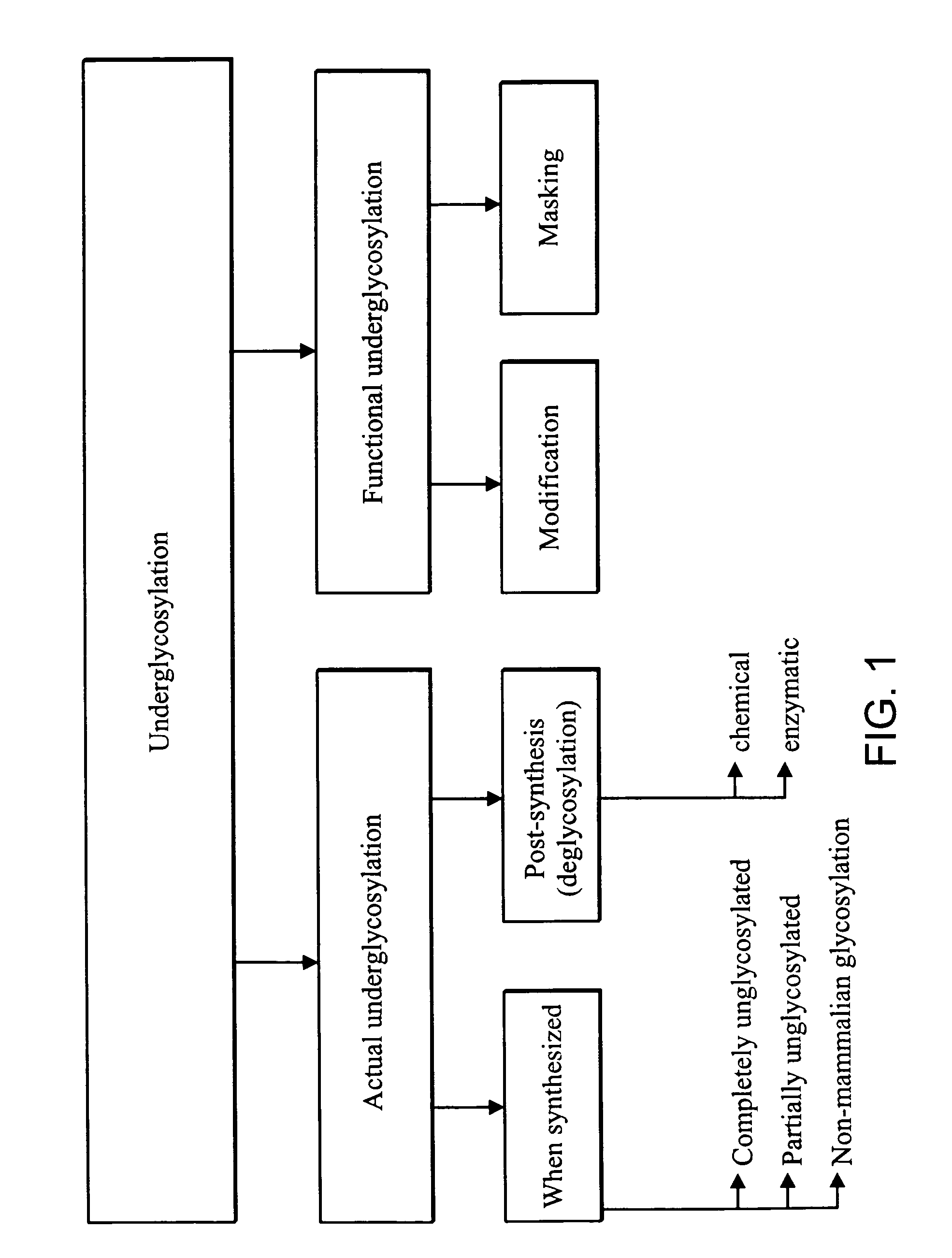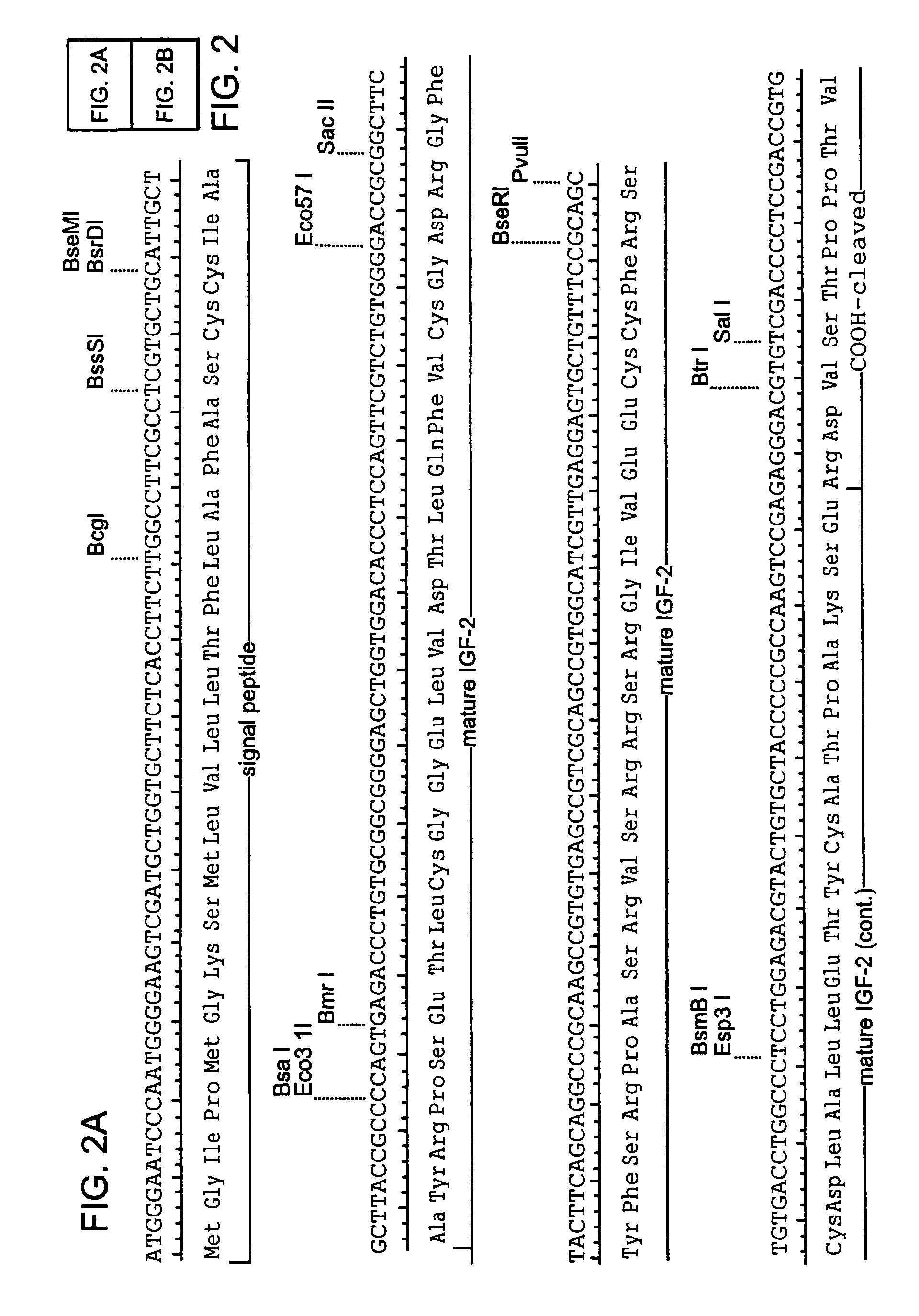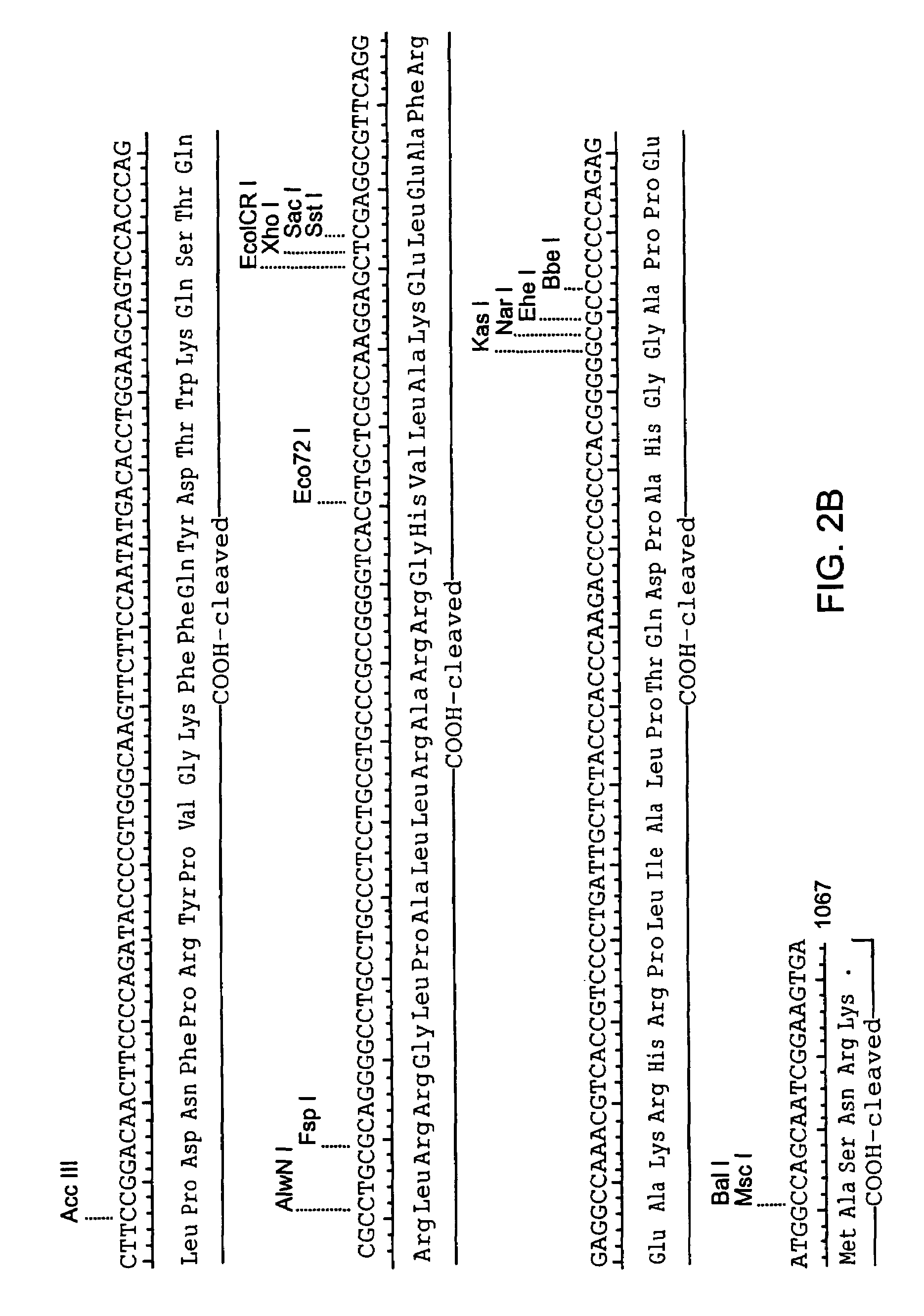Targeted therapeutic proteins
a technology of therapeutic proteins and proteins, applied in the field of targeted therapeutic proteins, can solve problems such as brain development defects, and achieve the effects of reducing glycosylation of the protein, extending the half-life of the protein, and reducing the binding of the therapeutic protein
- Summary
- Abstract
- Description
- Claims
- Application Information
AI Technical Summary
Benefits of technology
Problems solved by technology
Method used
Image
Examples
example 1
GILT Constructs
[0136]IGF-II cassettes have been synthesized by ligation of a series of overlapping oligos and cloned into Pir1-SAT, a standard Leishmania expression vector. 4 IGF-II cassettes have been made: one that encodes the wildtype mature polypeptide, one with a Δ1-7 deletion, one with a Y27L mutation, and one with both mutations. These mutations are reported to reduce binding of IGF-II to the other receptors while not affecting binding to the M6P receptor.
[0137]The coding sequence of human IGF-II is shown in FIG. 2. The protein is synthesized as a pre-pro-protein with a 24 amino acid signal peptide at the amino terminus and a 89 amino acid carboxy terminal region both of which are removed post-translationally, reviewed in O'Dell et al. (1998) Int. J. Biochem Cell Biol. 30(7):767-71. The mature protein is 67 amino acids. A Leishmania codon optimized version of the mature IGF-II is shown in FIG. 3 (Langford et al. (1992) Exp. Parasitol. 74(3):360-1). This cassette was construct...
example 2
GILT Protein Preparation
[0144]L. mexicana expressing and secreting β-GUS were grown at 26° C. in 100 ml Standard Promastigote medium (M199 with 40 mM HEPES, pH 7.5, 0.1 mM adenine, 0.0005% hemin, 0.0001% biotin, 5% fetal bovine serum, 5% embryonic fluid, 50 units / ml penicillin, 50 μg / ml streptomycin and 50 μg / ml nourseothricin). After reaching a density of approximately 5×106 promastigotes / ml, the promastigotes were collected by centrifugation for 10 min. at 1000×g at room temperature; these promastigotes were used to inoculate 1 liter of low protein medium (M199 supplemented with 0.1 mM adenine, 0.0001% biotin, 50 units / ml penicillin and 50 μg / ml streptomycin) at room temperature. The 1 liter cultures were contained in 2 liter capped flasks with a sterile stir bar so that the cultures could be incubated at 26° C. with gentle stirring. The 1 liter cultures were aerated twice a day by moving them into a laminar flow hood, removing the caps and swirling vigorously before replacing the...
example 3
GILT Uptake Assay
[0145]Skin fibroblast line GM4668 (human, NIGMS Human Genetic Mutant Cell Repository) is derived from a patient with mucopolysaccharidosis VII; the cells therefore have little or no β-GUS activity. GM4668 cells are therefore particularly useful for testing the uptake of GUS-GILT constructs into human cells. GM4668 cells were cultured in 12-well tissue culture plates in Dulbecco's modified Eagle's medium (DMEM) supplemented with 15% (v / v) fetal calf serum at 37° C. in 5% CO2. Fibroblasts were cultured overnight in the presence of about 150 units of preparations of Leishmania-expressed human β-glucuronidase (GUS), GUS-IGF-II fusion protein (GUS-GILT), or mutant GUS-IGF-II fusion protein (GUSA-GILT) prepared as described in Example 2. Control wells contained no added enzyme (DMEM media blank). After incubation, media was removed from the wells and assayed in triplicate for GUS activity. Wells were washed five times with 1 ml of 37° C. phosphate-buffered saline, then in...
PUM
| Property | Measurement | Unit |
|---|---|---|
| dissociation constant | aaaaa | aaaaa |
| pH | aaaaa | aaaaa |
| pH | aaaaa | aaaaa |
Abstract
Description
Claims
Application Information
 Login to View More
Login to View More - R&D
- Intellectual Property
- Life Sciences
- Materials
- Tech Scout
- Unparalleled Data Quality
- Higher Quality Content
- 60% Fewer Hallucinations
Browse by: Latest US Patents, China's latest patents, Technical Efficacy Thesaurus, Application Domain, Technology Topic, Popular Technical Reports.
© 2025 PatSnap. All rights reserved.Legal|Privacy policy|Modern Slavery Act Transparency Statement|Sitemap|About US| Contact US: help@patsnap.com



